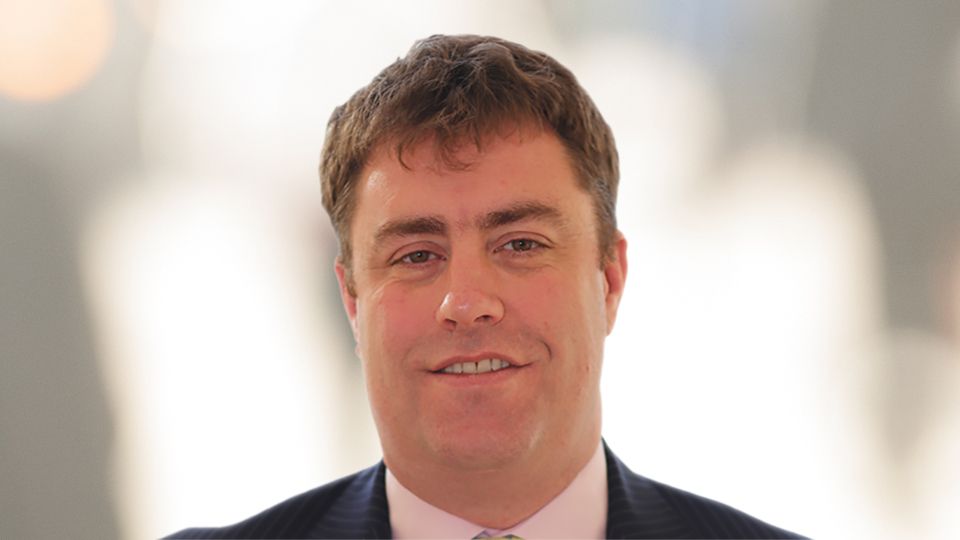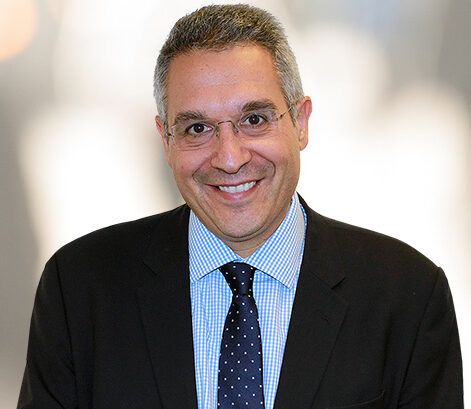ESG Clarity asked investment commentators working in the responsible investment space to share their biggest challenges of 2022, and what they think is in store for the industry next year.

Social issues – such as human rights and diversity – will see a bigger focus
Andy Howard, global head of sustainable investment, Schroders
Reflecting on what has been a tumultuous year for ESG and markets in general, what has been your biggest challenge and how have you overcome it?
At Schroders, we committed to transitioning towards net zero over the coming decades, including setting a Science-Based Target, validated by the Science-Based Targets initiative earlier in 2022.
But setting a target is the easy part. How we, and other businesses, decarbonise is critically important to the value we will create for our clients. We have created the Climate Transition Action Plan to outline a roadmap.
Political momentum clearly slowed in 2022, but importantly the private sector continues to push ahead, helping close some of the gap between the ambitions global leaders have laid out and corporate readiness for transition.
The COP27 climate summit in Egypt in November did little to cement global commitments to action. That said, agreement on a “loss and damage” fund to help developing nations should ease one key challenge to delivering the changes needed to reach the goals laid out in Paris in 2015. Attention will turn to COP28 in the UAE later in 2023.
Our focus has been on using our voice and influence to engage the most exposed companies and pushing them to lay out transition plans. In the year ahead we will be intensifying those efforts.
Please provide one prediction for the ESG investment world for 2023.
At a human level, a cost-of-living crisis has taken grip in many countries and while the most acute pressures may abate in 2023, poverty is a threat we will be monitoring. Few governments have the fiscal capacity to absorb shortfalls in household budgets and social stresses could intensify. Companies are coming under pressure to ensure vulnerable workers are protected – whether through wage increases and benefits for their own employees or their responsibility to workers in supply chains.
We could see greater pressure on the political systems. This could undermine investors’ faith that political leadership will clearly define priorities, pushing responsibility back to companies and investors like ourselves.
While climate change and nature have dominated headlines, particularly in the run-up to COP27 and COP15, we expect a bigger focus on social issues, including human capital management, human rights and diversity and inclusion in the new year. These are core themes for active ownership for us at Schroders.
Our own survey of more than 700 institutional investors in 2022 found around half (48%) are focusing on the impact of their investments, up from about a third (34%) in 2020. We expect that trend to continue.

Growing calls for companies to publish transition reports
Nazmeera Moola, chief sustainability officer, Ninety One
Reflecting on what has been a tumultuous year for ESG and markets in general, what has been your biggest challenge and how have you overcome it?
We have been concerned for some time about the unintended side effects of short-term portfolio decarbonisation targets. It is not that difficult to decarbonise a portfolio. You sell high emitting sectors and high emitting countries, principally emerging markets. This has little impact on physical emissions – but it does make it much more difficult for emerging markets to transition and leaves high emitting companies in the hands of investors who are unconcerned with transition. In contrast, setting net-zero targets that require intensive engagement with high emitting companies is harder – and results in a good deal more work.
However, this has the highest probability of resulting in a reduction in real-world emissions. We have spent a lot of this year explaining our targets and our approach to asset owners and other financial institutions. Fortunately, there does seem to be a growing understanding of the need to finance the transition in emerging markets and to limit divestment and exclusion.
Please provide one prediction for the ESG investment world for 2023.
The focus on evaluating and funding transition will intensify. There are growing calls for companies to publish transition plans as part of their annual reports. The data and tools available to evaluate transition plans will improve. However, it will still be several years before we reach a widely usable standard. In the meantime, in-house expertise will be needed to assess transition plans.

Focus on adaptation and transition plans
Cathrine De Coninck-Lopez, global head of ESG at Invesco.
Reflecting on what has been a tumultuous year for ESG and markets in general, what has been your biggest challenge and how have you overcome it?
2022 has highlighted the broader complexities of ESG investing and brought the role of ESG investing into global discourse. The ESG landscape has evolved rapidly, globally and in a very public way. Coupled with lack of clear definitions, varied interpretation of new rules and a spectrum of personal values, it is no wonder that there is widespread confusion around the ESG world.
To address this, we standardised ESG language to enhance clarity while innovating in solutions and data. First, we adopted a firmwide ESG nomenclature, recognising a spectrum of ESG investing objectives and approaches that can be customised to client needs. This is a proprietary internal standard that can be mapped to regulations across regions. We also deepened innovations in ESG strategies through launching a range of thematics including net zero, social progress and smart foods. Finally, these strategies are supported by strengthening our data capabilities including the launch of the ESGCentral tool for portfolio ESG analysis that can facilitate ESG reviews and reporting.
Please provide one prediction for the ESG investment world for 2023.
While much of ESG investing has been focused on climate mitigation previously, 2023 will see a broadening of focus into adaptation and transition plans.
Climate adaptation refers to the ability of people and nature to adapt to climate risks. The most immediate issue is that of physical risks. Focusing on habitat protection, flood and drought management, water and energy conservation, and retrofitting properties for changing weather conditions, amongst other actions, are needed in a changing world. In 2022, adaptation finance only represented around 10% of issued green bond universe but this could grow significantly with particular emphasis on use of proceeds for emerging markets.

ESG was never more misunderstood than in the year that passed
Leon Kamhi, head of responsibility at Federated Hermes
Reflecting on what has been a tumultuous year for ESG and markets in general, what has been your biggest challenge and how have you overcome it?
It is odd that having entered the investment industry’s lexicon all the way back in 2006 with the launch of the Principles of Responsible Investment (PRI), it feels like ESG was never more misunderstood than in the year that passed. Therefore, difficult as it might be there was no surprise that regulators sought to bring order and seek to get some definitions on what might constitute an ESG or sustainability fund and stem the tide of greenwashing.
For our part, we sought to communicate a clear distinction between thematic ESG funds – be they exclusionary or impact – which represent an investor’s set of values or ethics and ESG funds, and which integrate material ESG performance drivers alongside traditional performance indicators with the objective of long-term wealth creation for investors. In addition, we heavily promoted to clients, standard setters, regulators and investment peers the value of stewardship to deliver sustainable outcomes and improve the performance of investees. Stewardship is key as an integrated part of both types of ESG funds.
Please provide one prediction for the ESG investment world for 2023.
My prediction for 2023 is a continuation of 2022. That we can expect continued polarisation of views on ESG and an even greater legal scrutiny of investment managers’ activity, which, in turn, may lead to the stalling of necessary policy changes in some parts of the world, and companies being unreceptive to investor engagement and putting off the capital allocation actions needed to develop a green economy. Furthermore, increased regulatory and disclosure requirements are likely to be on their way distracting resources from spending time on stewardship and responsible investment with the need to deliver a plethora of new reports. I hope I’m wrong!




